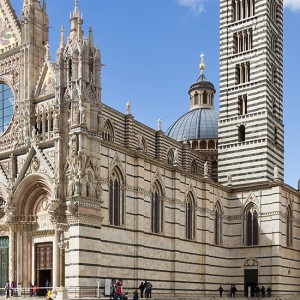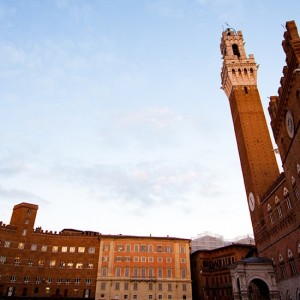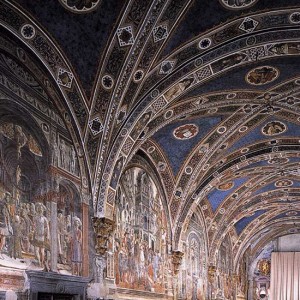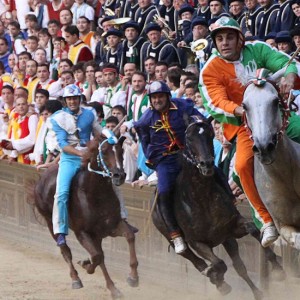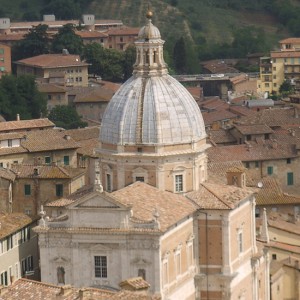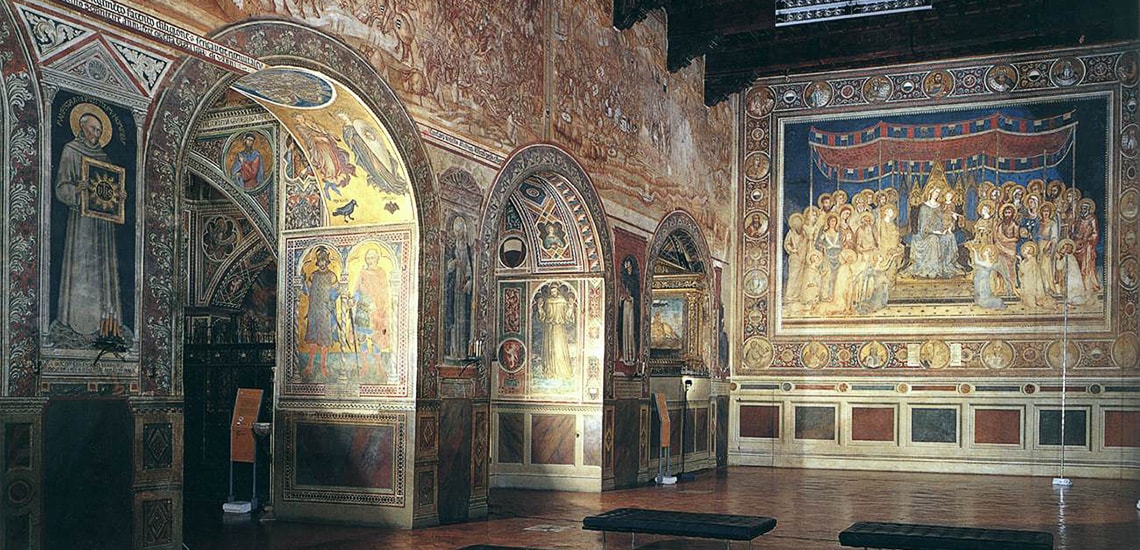
Located on the first floor of the Palazzo Pubblico, the most important Siena’s museum was set up in the 30s of the twentieth century and it hosts veritable Italian art’s masterpieces.
Limiting ourselves to the most famous works, the Sala del Risorgimento is the most recent part of the building, frescoed by artists mostly from Tuscany of the XIX century.
After crossing the hall, you get to the Sala della Balia entirely decorated with frescoes of the early fifteenth century due to hand Martino di Bartolomeo and Spinello Aretino.
Also notable is the Antechapel adorned with paintings by Taddeo di Bartolo and the board placed on the altar (a Holy Family with St. Leonard) is a painting of 1530 of Sodoma.
The most famous room of the museum is the Sala del Mappamondo (Hall of Globe), which owes its name to an ancient swivel globe (now destroyed) realized by Ambrogio Lorenzetti in 1345. The prints of his rotating activity are still visible on the wall. On this side of the hall we find the famous Guidoriccio da Fogliano fresco by Simone Martini, the Presa del Castello di Giuncarico (takeover of the Castle of Giuncarico) perhaps due to the hand of Duccio di Buoninsegna and figures of San Vittore and Sant’Ansano still made from Sodoma. On the opposite wall we find one of the masterpieces of Italian Gothic art: the Maestà concluded by Simone Martini in 1315 but restored (for political reasons and not for issues related to conservation) by himself in 1321.
The adjacent room, the so-called Sala dei Nove o della Pace (Hall of the Nines, or of the Peace), unfolds on three walls a fresco cycle, with multiple meanings politicians, depicting The Effects of Good and Bad Government. The author of the cycle, painted between 1338 and 1340, was another symbol of the artists of the Sienese Gothic season as Ambrogio Lorenzetti.
Very important is also the Consistory Hall where even today many people get married in a civil ceremony, under the vault decorated with bright frescoes due to the hand of Domenico Beccafumi, one of the most important Sienese painters of the sixteenth century. Even noteworthy, above the entrance door of the room, a Judgment of Solomon had to brush one of the champions of Neapolitan Baroque Luca Giordano.
From the Loggia of the Public Palace, finally, you can enjoy a wonderful view of the Market Square and on the south of the city, a landscape up to the mountain Mont Amiata…
Siena’s Museum – the Civic Museum: a place not to be missed
See the other points of interest
